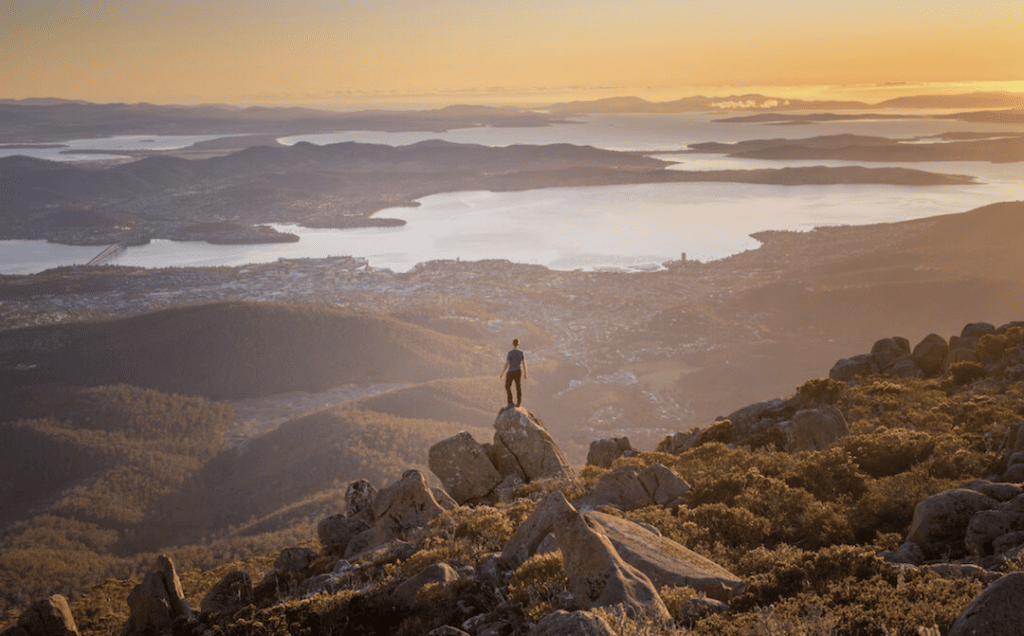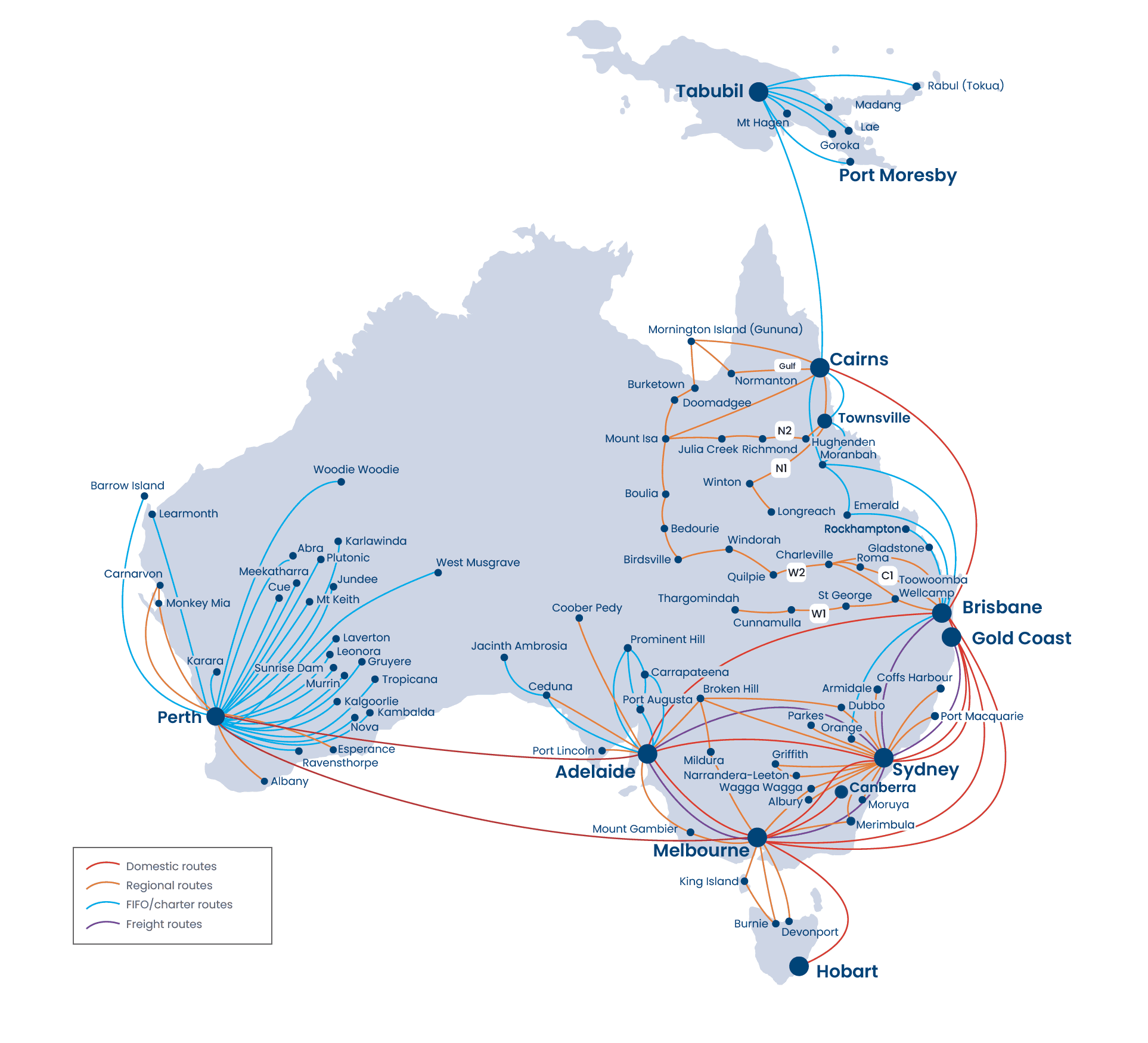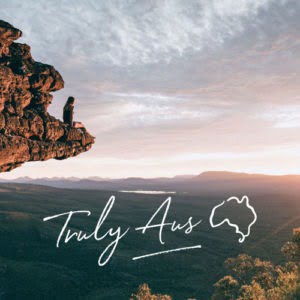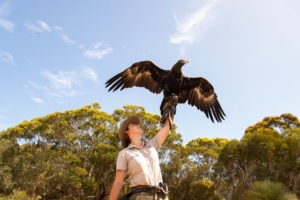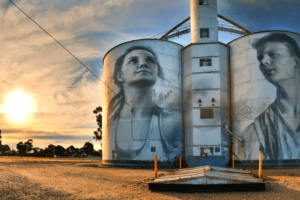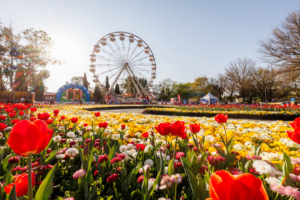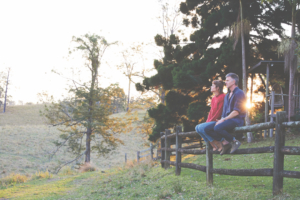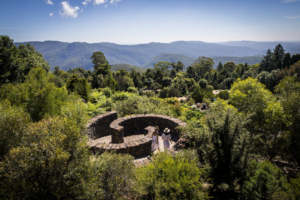Hobart may be one of Australia’s smallest capital cities, but it is also one of the most compact and easiest to get around as well as offering plenty to interest visitors, whether they be history buffs, gourmets, or lovers of the outdoors.
Western settlement of the Tasmanian capital – formerly known as Hobarton – dates to 1804, making it the second-oldest city in Australia.
Prior to British settlement, the area was occupied by indigenous people who now call themselves Palawa.
The imposing kunanyi/Mount Wellington towers above the city – and offers a slice of wilderness just a few minutes’ drive from downtown.
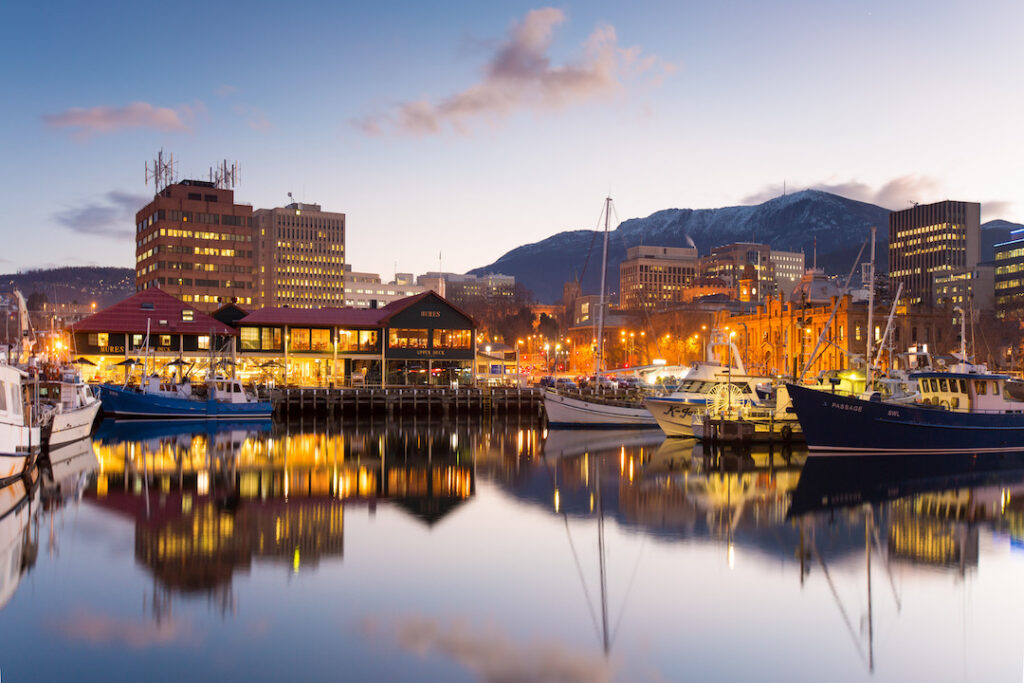
By the waterfront
Hobart city is centred around the waterfront, home to a fishing fleet that delivers delish seafood from the cool waters, and the Salamanca bar and restaurant precinct that is home to the iconic Salamanca Markets held every Saturday morning.
The Sydney to Hobart Yacht Race – for 77 years an icon of Australia’s summer sporting calendar – finishes at Constitution Dock, adjacent to where the annual Taste of Summer gourmet festival is held.
Hobart is also one of Australia’s greenest capitals with the Royal Tasmanian Botanical Gardens (a regular venue for concerts and events) also just a stroll the shopping precinct centred on Collins and Liverpool streets.
A slightly longer walk away are the suburbs of North Hobart, with many eateries, wine bars and galleries, and Sandy Bay with upscale shops and a selection of Asian restaurants.
On the fringe of the Salamanca precinct is historic Battery Point with its many 19th-century sandstone and weatherboard cottages, historic landmarks and traditional pubs like the Shipwright’s Arms. Once a working-class area, this in now prime real-estate territory.
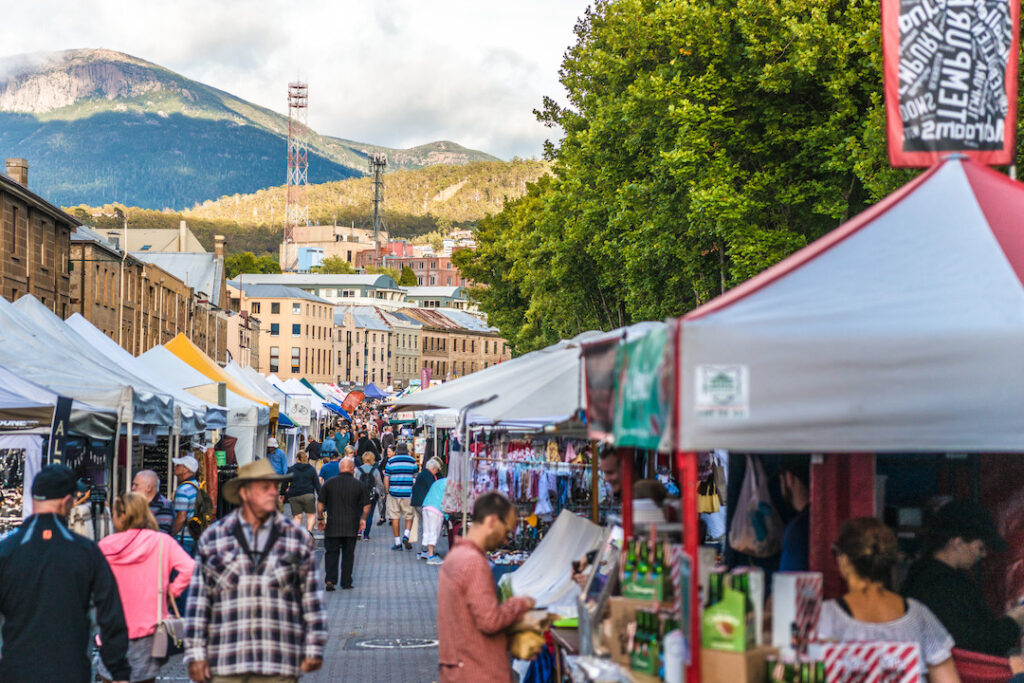
Tour the city
Attractions close to the city include the landmark MONA (Museum of Old and New Art), which can be reached by ferries departing from Brooke St Pier on the waterfront.
Just a short stroll from the pier are the fish punts: floating restaurants and markets from which you can buy fresh seafood, or local flathead and chips, or perhaps some fresh-caught scallops and locally made ice creams.
To get an idea of Hobart’s geography, visitors can take a hop-on, hop-off Red Decker tour bus, which stops 20 times at various points of interest and takes around 90 minutes to complete its city loop tour. You can enjoy views of the River Derwent, Tasman Bridge and Mount Wellington, as well as taking in the colonial architecture in the city.
Other city highlights include the well-presented Tasmanian Museum and Art Gallery, the Cascades Female Factory that tells the story of convict women and girls, and North Hobart’s lively gourmet strip.
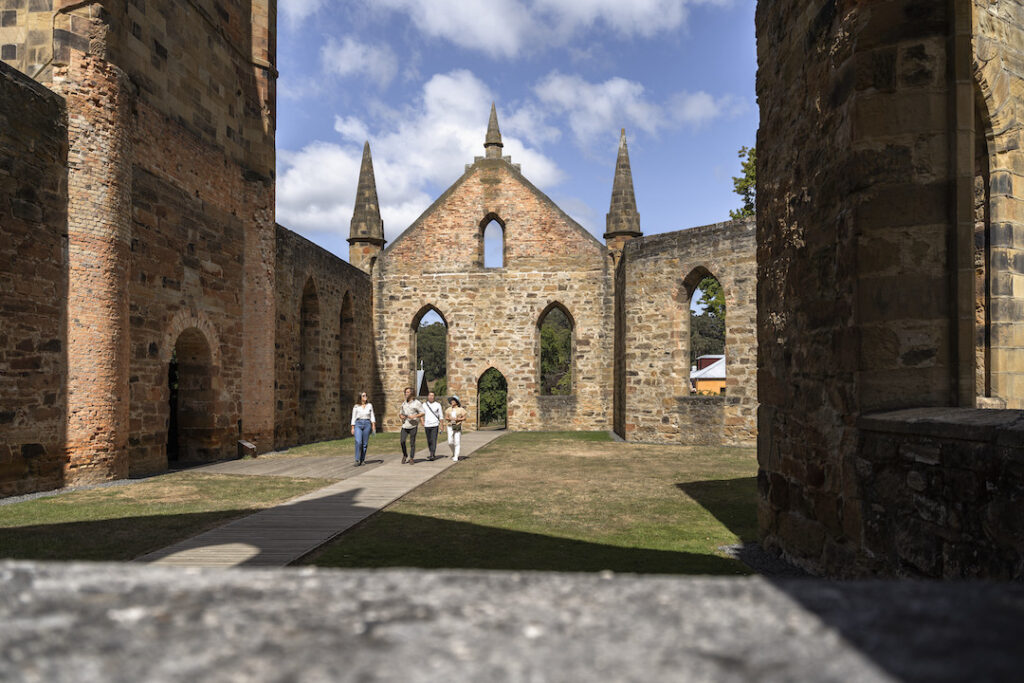
Explore the historic south
Hobart is also a great base for exploring southern Tasmania; from the historic Port Arthur site on the Tasman Peninsula to the south-west, to the wine regions of the Coal River Valley, Derwent Valley and Huon Valley, and Bruny Island, which can be reached by boat.
Port Arthur, around a 90-minute drive from Hobart, is World Heritage-listed and is regarded as the best-preserved convict site in Australia, and among the most significant convict era sites worldwide.
Sitting on the Tasman Peninsula – and also home to several wineries and distilleries – it was a 19th-century penal settlement and features an open-air museum. Well-preserved ruins include the penitentiary and the remaining shell of the Convict Church, which was built by hand by inmates.
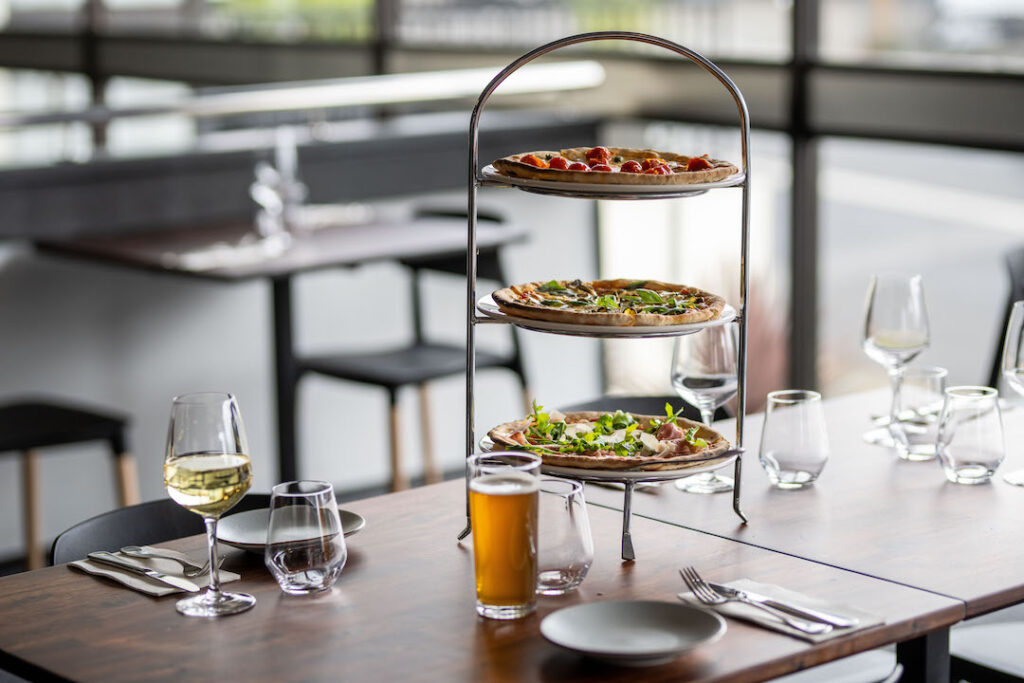
Where to stay
To be right amongst the action, the Best Western Hobart is located centrally in Hobart City. Just a 10 minute stroll will take you to Salamanca Place on the historical waterfront, where you can enjoy some of the city’s most vibrant restaurants, cafes and bars. The bustling Sunday Farm Gate Market is within a stone’s throw from the hotel, where you can enjoy Tasmanian produce and meet local farmers and producers. A 15 minute drive will take you to The Museum of Old and New Art (MONA), a “subversive adult Disneyland”, and one of the largest privately funded museums in Australia.
The hotel facilities include the delicious Embers Bar-Pizza-Grill, offering Tasmanian produce from farm to table.
The hotel has 141 spacious rooms with fresh, modern decor and views over either the city skyline, kunanyi/Mount Wellington or the Derwent River.
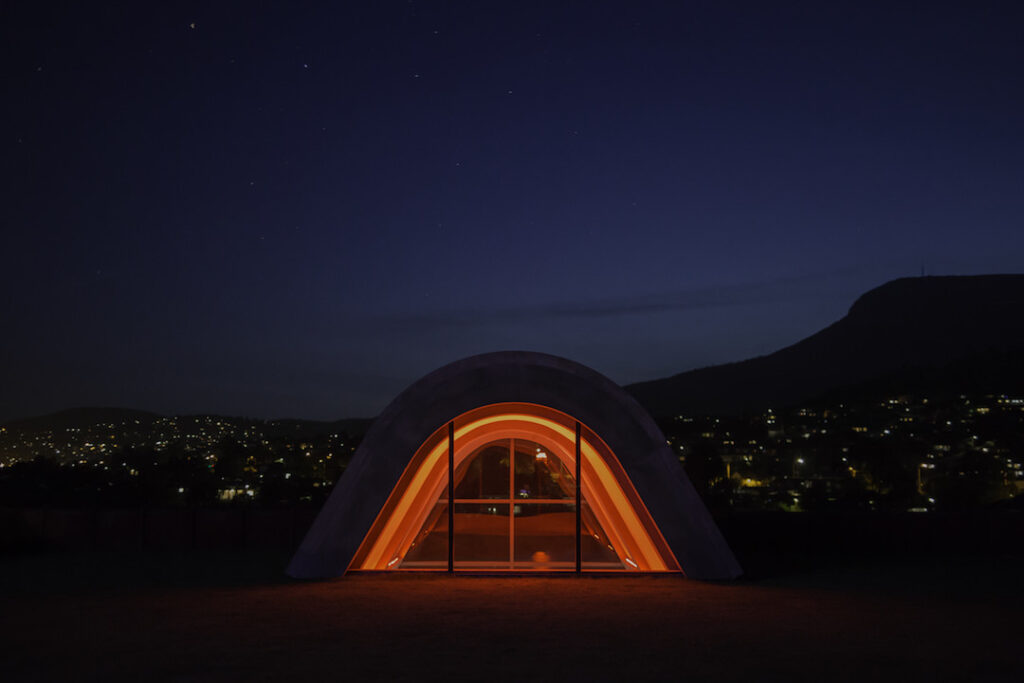
Four Hobart highlights
- The brainchild of multi-millionaire and philanthropist David Walsh, MONA is located on the River Derwent, 20 minutes north of the city at Berriedale. The museum, gallery, event space and eating and drinking precinct helped kick start Tasmania’s current tourism boom when it opened in 2011. Think a provocative private collection of modern art – and a revolving display of “out there” artworks. Arrive in style in the “Posh Pit” on board one of the Mona Roamer ferries. Walsh is also the man behind the Mona Foma and Dark Mofo cultural festivals and owns the Moorilla and Domaine A wineries, as well as the Moo Brew brewery, which is about to open a new taphouse at Salamanca.
- The city is overseen by kunanyi/Mount Wellington, the city’s green lungs that are full of native wildlife and can be blanketed with snow in the winter months. The walking tracks traverse forest, woodland, and alpine environments – and even waterfalls. Many Hobartians exercise here on weekend, whether on foot or mountain bikes.
- The weekly Salamanca Markets are popular with locals and tourists alike. Whether you want to taste some local produce, buy souvenirs, pick up some warm clothing or taste test some locally distilled whiskies and gins, you are in the right spot. The City of Hobart is celebrating Salamanca Market’s 50th anniversary. Home to over 300 small businesses, it is Tasmania’s most-visited tourist attraction. On Sundays, meanwhile, farmers and artisan producers sell their wares at the Hobart Farm Gate Market.
- The Royal Tasmanian Botanical Garden is a 14-hectare cool-climate garden on the edge of the city. First laid out in 1818, It boasts several collections, including Australia’s only subantarctic plant house and a delightful Japanese Garden. Entry is free. Visitors can enjoy a guided 50-minute walking tour that departs each day at 11am or pick up a map from the Visitor Hub located at the main gate and explore at their leisure.
To discover more cool and creative things to do in Hobart, click here.
Rex now flies to Hobart! For more information, head to their website or check out the route map below.

